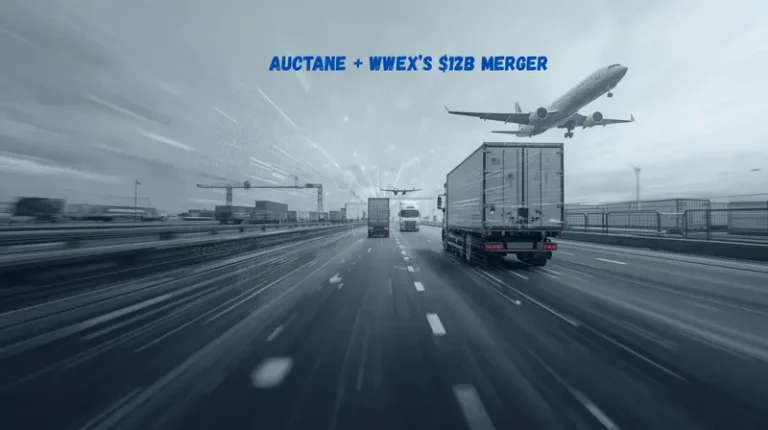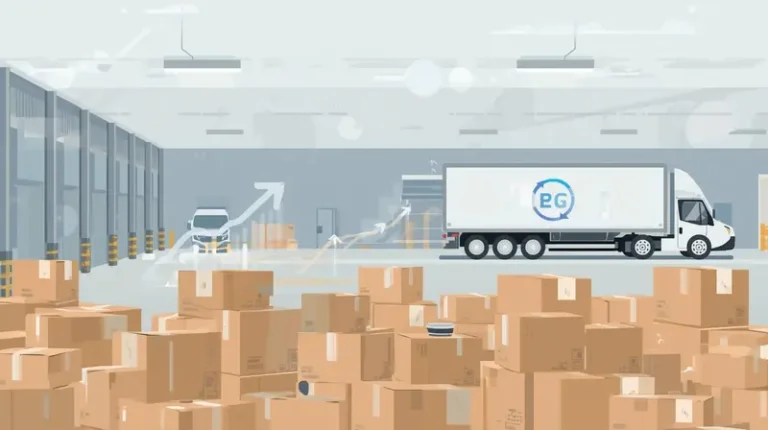5 Brutal Truths About Ecommerce Profitability (from Ugly Talk NYC)

Last updated on August 25, 2025

In this article
 14 minutes
14 minutes
- Meet the Panelists Featured Here
- Brutal Truth #1: The ZIRP Era Is Dead
- Brutal Truth #2: Old Tracking Playbooks Are Broken
- Brutal Truth #3: CAC Math Is a Lie in 2025
- Brutal Truth #4: Less Is More — SKUs, Content, Channels
- Brutal Truth #5: AI Will Not Save You Without Context
- The Playbook That Replaces the Old One
- Full Session Video
- Frequently Asked Questions
- Speaker Bios
In August 2025, founders and operators packed a standing room only space at NomadWorks in Times Square, New York City for Ugly Talk NYC: Building Profitable Ecommerce in a Downward Market, a panel designed to cut through the noise. No “growth hacks.” No feel-good fluff. Just raw, unfiltered truth about why ecommerce profitability has never been harder, and what you need to do about it now.
If you’re reading this, you’re not looking for theory. You want survival strategies. This article distills the 5 brutal truths shared on stage, each a direct challenge to the old playbooks that no longer work. It distills the sharpest insights from blends them with current data and outside examples, and leaves you with a focused playbook for the second half of 2025. Use it as the pillar article that spawns your clips, carousels, emails, and deep-dives.
Meet the Panelists Featured Here
- Manish Chowdhary — Founder & CEO, Cahoot (panel moderator)
- London Glorfield — Founder, Kickback (screenless electronics)
- Maya Juchtman — Senior Director, Marketing & Partnerships, Roswell NYC
- Sabir Semerkant — Founder, Growth by Sabir, helped drive $1B+ in ecommerce growth
(Detailed bios appear at the end of this article.)
Slash Your Fulfillment Costs by Up to 30%
Cut shipping expenses by 30% and boost profit with Cahoot's AI-optimized fulfillment services and modern tech —no overheads and no humans required!
I'm Interested in Saving Time and MoneyBrutal Truth #1: The ZIRP Era Is Dead
Panel moderator Manish Chowdhary opened with a stark reminder:
“For a long time until very recently we were in a zero interest rate phenomenon and money was easy, money was flowing. When that happens, fundamentals go out the door which means weak businesses thrive or appear to thrive. There are 10 ecommerce darlings … Stitch Fix, Grove Collaborative, even Olaplex are penny stocks. They probably won’t be trading on the New York Stock Exchange for much longer now.”
For a decade, zero interest rates hid a lot of sins. That era really is over. The Federal Reserve kept policy tight through mid-2025 as inflation and growth data stayed mixed; capital is scarce again and the bar for profitability is higher. Translation: if your growth story depends on forever-cheap money, it is not a story anymore.
At the same time, the rules of trade changed. In 2025 the White House directed sweeping tariff actions, including reciprocal tariffs, a new tariff commission, and orders to suspend de minimis entry benefits to certain countries for national security and unfair trade concerns. If you import, your landed-cost model changed whether you noticed or not. Plan pricing, assortment, and cash cycles accordingly.
Panelists underscored how the “free money plus cheap acquisition” era minted fragile brands.
“Weak businesses thrived under cheap money. Today, those same brands say ‘I don’t want to be like me.’” — Manish.
This is a hard reset: brands that looked unstoppable during the ZIRP boom are collapsing. A harsh reminder that product love without durable unit economics does not keep the lights on. The takeaway is not doom; it is clarity. Rebuild your plan around cash margin, inventory turns, and repeat behavior instead of “fundraising as a strategy.”
What to do next:
- Re-forecast demand with tariff-inclusive costs, not “last year plus five percent.” Build A/B/C scenarios that stress test your cash conversion cycle under higher duties and slower demand.
- Renegotiate with suppliers using tariff math as leverage. Lock freight earlier and shorten cash exposure windows where possible.
- Tighten SKU economics: kill long-tail variants that tie up working capital and complicate replenishment. We revisit SKU discipline in Brutal Truth #4.
Brutal Truth #2: Old Tracking Playbooks Are Broken
The story is not “iOS killed the Pixel” and that is the end. It started with Apple’s App Tracking Transparency (ATT) and Mail Privacy Protection, then spread to browser privacy defaults, ad blockers, and a shifting timeline for third-party cookies in Chrome. Treating the Meta Pixel as gospel in 2025 is how you fly blind.
Email metrics are distorted too. The panel called out inflated open rates: those “35% opens” many teams celebrate are not real if a big chunk of your audience is on Apple Mail with MPP. Litmus and others confirm that MPP obscures open behavior and that “open” is no longer a reliable KPI. Expect inconsistent handling of MPP across email service providers and move your reporting toward clicks, conversions, revenue, and deliverability health.
“You need to manage ecommerce like your Charles Schwab or Fidelity account, money management first, not blind ad spend.” — Sabir.
Looking for a New 3PL? Start with this Free RFP Template
Cut weeks off your selection process. Avoid pitfalls. Get the only 3PL RFP checklist built for ecommerce brands, absolutely free.
Get My Free 3PL RFPThe fix is a hybrid, first-party stack:
- Pixel + Conversions API (CAPI) with deduplication. Send server-side events, include event IDs, and deduplicate against browser events. This is Meta’s own recommendation for restoring signal quality post-ATT.
- Aggregated Event Measurement and prioritized web events, plus server-to-server purchase reporting, to stabilize performance reporting.
- Email reality check: prune disengaged segments, build exclusion rules, and monitor sender reputation daily. Spray-and-pray is a deliverability death spiral.
- Measure beyond last-click. Use modeled attribution and incrementality testing where possible; treat platform-reported ROAS as a directional input, not financial truth.
“I just looked at a few accounts recently…their deliverability [was] horrible. But they came to me and they were like, ‘Oh I’m seeing 35% open rates. 30% open rates, that’s fine, right?’ Actually no. If you’re sending to lists and you’re not doing exclusions and you’re not actually thinking about Apple privacy which auto inflates. So those numbers, that open rate, that’s not real, that’s Apple privacy, Google and Hotmail inflating that. So your open rate is actually probably going to be more like 10.” — Maya.
Why this matters: brands that relied on Meta Pixel lost signal, misallocated budget, and watched revenue wobble when the ground shifted. Hybrid tracking, server events, and healthier email lists (even is leaner) help you defend spend and redirect dollars faster.
Brutal Truth #3: CAC Math Is a Lie in 2025
“CAC isn’t one number anymore, layered strategy required.” — Summary of Maya’s segment.
CAC used to be a single dashboard tile. Now it is a portfolio of acquisition costs across funnel stages and channels. Top-of-funnel stories are expensive and slow, but they seed cheaper retargeting, stronger LTV, and more resilient cohorts. Roswell’s work with Hyperlite illustrates this: brand and experience up top, brand-aware retargeting down-funnel, and a different CAC expectation for each layer.
When you treat CAC as a single number, you are tempted to shut off expensive awareness that actually lowers blended CAC over time. In 2025, the math that matters is blended CAC to contribution margin by cohort, with inventory and cash timing in the same equation.
A tighter model:
- Top-funnel CAC: higher; track assist value, search lift, and branded queries.
- Mid-funnel CAC: creative-led; expect decays in 3 – 6 weeks as creative burns out. Rotate on a schedule.
- Bottom-funnel CAC: cheaper retargeting; cap frequency, and watch saturating segments.
- Community CAC: Discord, events, direct mail; small volumes, high LTV, exceptional payback.
Finally, build a channel-shift reflex. If 70% of spend sits on Meta and performance degrades, rebalance to 70% Google, 30% Meta overnight; the panel was blunt that single-platform dependency is a solvency risk now.
Brutal Truth #4: Less Is More — SKUs, Content, Channels
SKUs. The room agreed: assortment bloat is a silent margin killer. If you have “30 orders and 300 SKUs,” you do not have a marketing problem, you have a focus problem. Ship the hero, kill the laggards, and stop coloring the T-shirt sixteen ways.
“If you can’t make your hero product succeed in a big way, these chotchkes are not going to save you. That’s just a pure distraction. And I can tell you from my own personal experience, we throw away that stuff because nobody wants it. We can’t even get pennies on the dollar. The brand may associate such deep emotional and financial value to that, but it has zero or very little value outside. So you have to be very, very consider it in your product skus election. Just because one customer says, I wanted a small burgundy, that is not a reason to produce that in small burgundy.” — Manish.
Outside the room, SKU discipline shows up in the data. Post-pandemic, CPG leaders that rationalized assortments saw service levels recover and productivity improve; fewer SKUs meant fewer changeovers and better on-shelf availability. Ecommerce is no different: fewer variants mean faster replenishment, fewer stockouts, and cleaner creative.
Content. Volume for volume’s sake is out. London put it plainly: Kickback moved from “posting 10 times a day” to scripted, value-driven content, because audiences are saturated and can sniff filler. Manish’s team blasted out 300 AI-generated videos in a week and one handcrafted video outperformed all of them combined by ~100x. That is not a cute anecdote, it is a strategy correction: quality over volume.
Channels. Kickback treats channels like a portfolio. TikTok is growth equity, Instagram is the S&P, email is for committed audiences, Discord and physical mail are VIP touchpoints. That last one matters. London’s team sends text-first emails and literal playlists, and then backs it up with quarterly handwritten notes. Community intimacy beats blast discounts.
Direct mail is back in the mix. Panelists see postcards and letters driving meaningful second-purchase behavior; Sabir cited 14 – 20% response rates in recent campaigns and argued that, for the first time in years, a stamped postcard can be cheaper than a Meta click. Meanwhile, stamp prices rose again in July 2025 to 80¢ for a First-Class Forever stamp, which is still a modest input compared to volatile CPCs. The point is not that mail is “cheap,” it is that it can be predictable, targeted, and human in a way digital often is not.
Brutal Truth #5: AI Will Not Save You Without Context
“AI is like hiring interns from MIT, University of Penn, Harvard, or Yale, really smart, really smart kids, right? Phenomenal. Very intelligent. They have amazing intelligence, but they just don’t know how to use it. It’s my job to guide them.” — Sabir.
Generative tools are incredible force multipliers, and they also flood the feed with sameness. When everyone can ship 100 posts a day, quality becomes the only differentiator. That is visible in search as well. Google’s evolving guidance keeps prioritizing E-E-A-T (experience, expertise, authoritativeness, and trust) and people-first content; gaming systems with AI-written mush is a fast track to nowhere.
London’s read on Gen Z is instructive: they spot AI instantly and reward brands that feel human. Use AI to research, draft, and speed checks, then layer on your voice, data, and video craft. Manish’s 100x lesson is the headline here, and it pairs with a second one from the panel: optimize for AI discovery, not just traditional SEO. Package your catalogs and content so LLMs can “see” them, test queries in AI products, and partner with publishers those models cite. That is the new distribution.
“The reality on the ground is that most brands, they’re so obsessed with paying Meta ads and Google Ads that they’re not focused on the organic strategies where they need to be developing. Especially AI. SEO is a thing right now where you can, you can package your content and actually feed it so that it can get discovered by AI engines. Because that’s where we are going, you know. And if you are optimizing your business based on what worked in 2022, that was a different part, different world at that time, right? It doesn’t exist. That world doesn’t exist right now.” — Sabir.
Scale Faster with the World’s First Peer-to-Peer Fulfillment Network
Tap into a nationwide network of high-performance partner warehouses — expand capacity, cut shipping costs, and reach customers 1–2 days faster.
Explore Fulfillment NetworkThe Playbook That Replaces the Old One
1) Operate like a money manager. Review spend daily; shift between channels quickly; protect cash; model tariffs explicitly; keep a rolling 13-week cash forecast.
2) Rebuild measurement. Pixel + CAPI with deduplication; AEM-prioritized events; click- and conversion-centric email analytics; full-funnel blended CAC.
3) Design for repeat behavior. Fewer products, tighter variants, faster replenishments, and community touchpoints that earn a second purchase.
4) Make fewer, better assets. Script, storyboard, and ship formats the audience would watch even if your brand name disappeared.
5) Treat physical mail and in-channel communities as profit centers. When done thoughtfully, they compound LTV while ad channels churn.
Full Session Video
[Embed the full recording here once live on YouTube or Vimeo. Use chapters by question for skimmability.]
Frequently Asked Questions
What is the single biggest profitability mistake brands are making in 2025?
Treating growth like it is still 2019. Cheap money and cheap acquisition masked weak unit economics. Today, you must run a tariff-aware P&L, operate with cash discipline, and design your plan around repeat purchase, not just net-new.
How exactly has Apple changed the way we measure marketing?
ATT and MPP broke legacy habits. App-level tracking is limited; email “opens” are inflated or meaningless. Shift to first-party data, Pixel + CAPI with deduplication, prioritized events, and conversion-level outcomes. Make “deliverability health” and “incremental revenue” your email KPIs.
Are third-party cookies still going away?
Chrome’s timing has been fluid and subject to regulatory review, but the direction is the same: less cross-site tracking, more privacy-preserving APIs. Plan as if third-party cookies are not dependable and invest in first-party audiences and server-side measurement now.
Why is direct mail suddenly on everyone’s roadmap?
Because it creates a human moment, is targetable, and, for many segments, has become cost-competitive with paid clicks again. Stamp prices rose to 80¢ in July 2025, yet response rates on targeted house-file mailings can be multiples of cold digital traffic. Use it for high-value cohorts and second-purchase nudges.
What does “Less Is More” mean in practice?
Cut SKUs aggressively, ship only what you can replenish, and make media you are proud to sign. Treat content and assortments like constrained resources. The panel’s best-performing video was a single crafted piece, not 300 AI clones.
How should I think about CAC now?
Make CAC layered: top-funnel story costs more and pays off in retargeting and LTV; mid-funnel burns out faster; bottom-funnel is cheaper but finite. Report blended CAC to contribution margin by cohort, not a single number.
Is email still worth the work?
Yes, but only if you run it like deliverability-first CRM. Build exclusions, cull dead segments, personalize copy, and measure clicks, conversions, and revenue. “Set and forget” is how you get clipped in 2025.
Speaker Bios
Manish Chowdhary — Manish Chowdhary is the Founder & CEO of Cahoot, the most comprehensive post-purchase logistics platform for ecommerce brands. We help merchants scale profitably with a bundled suite of services that includes:
- Fast, cost-effective fulfillment (1-day and 2-day nationwide coverage)
- AI-powered multi-warehouse shipping software that selects the cheapest label automatically
- An industry-first peer-to-peer returns solution that eliminates return shipping and restocking costs
With over 100 warehouses and advanced shipping automation, we help brands maintain control, boost speed, and cut logistics costs without the overhead of traditional 3PLs. I’m passionate about helping ecommerce businesses grow smarter. If you’re looking to improve your margins, delight customers, and future-proof your logistics, let’s connect.
My work has been recognized with multiple industry accolades, most recently winning the SaaStock USA Global Pitch Competition 2024. I’m passionate about using technology and collaboration to push the boundaries of ecommerce and logistics and create new opportunities for merchants worldwide.
London Glorfield — London is a founder and creative strategist who’s built at the intersection of culture and product his entire career. A former RCA-signed artist, he previously ran a creative direction firm and a Squarespace-style software startup. He is currently reimagining consumer electronics with Kickback.world, a fashion-forward audio brand rooted in youth culture and design.
Maya Juchtman — Maya is a creative marketing strategist and partnerships leader known for blending brand storytelling with performance. As Senior Director of Marketing & Partnerships at Roswell NYC, a Webby Award–winning Shopify Plus agency, she’s helped brands like Brixton, Hyperlite, and Curious Elixirs scale through thoughtful strategy and standout campaigns. With a background in customer experience and leading brands through start-up to acquisition, she brings a human-first, culturally aware lens to every project, building community, driving growth, and pushing the boundaries of what digital marketing can be.
Sabir Semerkant — Sabir is the go-to eCommerce growth strategist, credited with over $1B in revenue for 200+ brands from Canon to Sour Patch Kids. Backed by Gary Vee and Neil Patel, Sabir’s Rapid 2X method delivers 2X growth in 12–18 months profitably. Since 2024, it’s powered 70+ brands across 17 industries with an average 108% lift. His Rapid 2X Protocol is the unfair advantage for any eCom brand with product–market fit, engineered to scale revenue and profit even in down markets. Want real talk? Sabir reveals why most brands will fail in 2025 and exactly how to make sure yours isn’t one of them.

Turn Returns Into New Revenue





